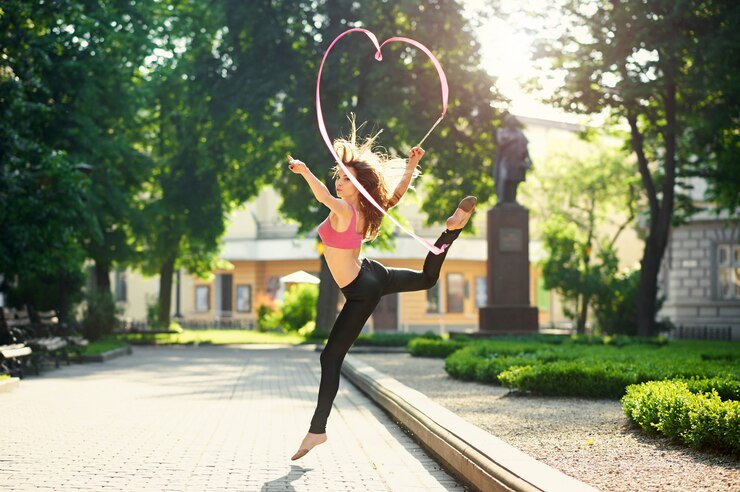In a world that often feels weighed down by routine and sedentary habits, the simple act of moving can be a powerful source of joy. Whether it’s the graceful flow of a dancer, the invigorating rhythm of a morning run, or the mindful stretching of yoga, movement offers an opportunity to reconnect with our bodies, ignite our passions, and celebrate life. In this article, we explore how embracing movement can transform our physical, mental, and emotional well-being—and why the joy in movement is an essential ingredient for a vibrant life.
The Essence of Movement
Movement is more than a physical act; it’s an expression of life itself. Every step we take, every stretch, every leap is a manifestation of energy, creativity, and freedom. In many ways, movement is a language—a way for our bodies to communicate emotions, thoughts, and experiences that words often fail to capture. It allows us to break free from the confines of our daily routines and tap into a deeper sense of vitality.
Movement as Self-Expression
- Dance and Rhythm: Dance is one of the most profound forms of movement. It transcends cultural and linguistic barriers, allowing individuals to express joy, sorrow, celebration, or even rebellion. Whether you’re swaying to your favorite song in your living room or performing on stage, dance encapsulates the universal language of human expression.
- Everyday Gestures: Even the simplest actions, like a morning stretch or a leisurely walk, are forms of movement that can bring pleasure and a sense of accomplishment. These daily gestures remind us that our bodies are designed to move, and by honoring that need, we invite more energy and positivity into our lives.
The Science Behind the Joy of Movement
Modern research supports what many have long believed: movement is intrinsically linked to happiness. When you engage in physical activity, your brain releases endorphins—often referred to as “feel-good” hormones—which help reduce stress, combat anxiety, and foster a general sense of well-being. Here are some scientific insights into why movement makes us feel so good:
- Endorphin Release: Physical activity triggers the production of endorphins, which act as natural painkillers and mood elevators. This biochemical response can lead to what’s commonly known as a “runner’s high,” leaving you with a profound sense of euphoria and reduced stress.
- Neuroplasticity and Cognitive Health: Regular movement supports neuroplasticity—the brain’s ability to reorganize itself by forming new neural connections. This can improve learning, memory, and overall cognitive function.
- Stress Reduction: Exercise reduces the levels of stress hormones like cortisol. Lower stress levels not only improve mood but also enhance sleep quality and overall physical health.
- Mind-Body Connection: Activities like yoga and tai chi promote mindfulness and body awareness, encouraging you to live in the present moment. This connection between mind and body can lead to greater emotional balance and resilience.
Types of Movement That Inspire Joy
Movement is not a one-size-fits-all endeavor. Different forms of physical activity can offer unique experiences of joy, depending on your personality, interests, and lifestyle. Here are some avenues you might explore:
1. Dance
Dance is an exuberant celebration of life. It can be structured or free-form, partner-based or solitary, but its impact is universally uplifting.
- Social Dance: Engage in dance classes or social events where you can connect with others while moving to music.
- Freestyle Movement: Sometimes, the best dance is the one you create on your own. Let your body move freely to your favorite tunes and feel the stress melt away.
2. Walking and Hiking
For many, the simplest form of movement is walking. Whether you stroll through a city park or trek a mountain trail, walking offers a meditative way to connect with nature and your inner self.
- Mindful Walking: Focus on each step, the sensation of your feet meeting the ground, and the rhythm of your breath. This mindful practice can turn a simple walk into a moving meditation.
- Exploration: Use walking as an opportunity to explore new neighborhoods, parks, or trails. The act of discovery can infuse your day with wonder and excitement.
3. Yoga and Stretching
Yoga combines physical movement with mindfulness, creating a practice that nurtures both body and mind.
- Flowing Sequences: Engage in vinyasa yoga, where each movement flows into the next, creating a dynamic and meditative experience.
- Gentle Stretching: Even a few minutes of gentle stretching can relieve tension, improve circulation, and restore your sense of balance.
4. Strength and Functional Training
For those who find joy in challenge, strength training can be incredibly rewarding. Lifting weights or engaging in bodyweight exercises not only builds physical strength but also boosts confidence and mental resilience.
- Functional Movement: Incorporate exercises that mimic natural movements, like squats, lunges, or push-ups. These activities can enhance your everyday mobility and reduce the risk of injury.
- Progress Tracking: Set goals and track your progress. Achieving new personal records or simply noticing an increase in strength can be a powerful source of satisfaction.
Cultivating Joy Through Movement: Practical Tips
If you’re looking to bring more joy into your life through movement, consider these practical strategies:
Create a Movement Ritual
Establish a daily or weekly ritual that prioritizes movement. This could be as simple as a morning stretch routine, a daily walk, or a weekly dance session. Consistency helps create a sense of anticipation and excitement around your practice.
Mix It Up
Variety is key to sustaining a joyful movement practice. Experiment with different types of activities—try a new dance class, explore a new hiking trail, or incorporate a different style of yoga. This variety not only keeps your routine fresh but also challenges your body in new ways.
Set Realistic Goals
Establish small, attainable goals related to your movement practice. Whether it’s increasing the duration of your walk, mastering a yoga pose, or adding an extra repetition to your strength routine, incremental progress can fuel motivation and a sense of accomplishment.
Mindfulness in Motion
Combine movement with mindfulness. Focus on the sensations in your body, the rhythm of your breath, and the environment around you. This integrated approach can transform physical activity into a deeply meditative and fulfilling experience.
Celebrate Your Journey
Acknowledge and celebrate the joy and progress you experience through movement. Whether it’s a personal achievement or simply the pleasure of moving, take time to reflect on the positive impact movement has on your life.
Conclusion: Embracing Life’s Natural Rhythm
The joy in movement is a powerful reminder that our bodies are designed to be active and expressive. By embracing various forms of movement—whether through dance, walking, yoga, or strength training—you can unlock a wellspring of physical vitality, mental clarity, and emotional well-being. Movement is not just about exercise; it’s about celebrating the inherent freedom and creativity that comes from being alive.
As you cultivate your own movement practice, remember that every step, every stretch, and every dance is an opportunity to reconnect with your true self. Embrace the journey, explore new forms of movement, and allow yourself to feel the joy that arises when you move with intention and passion.
Let the rhythm of your body remind you that life is a dynamic, ever-evolving dance. Celebrate it, move through it, and find your joy in every moment.




